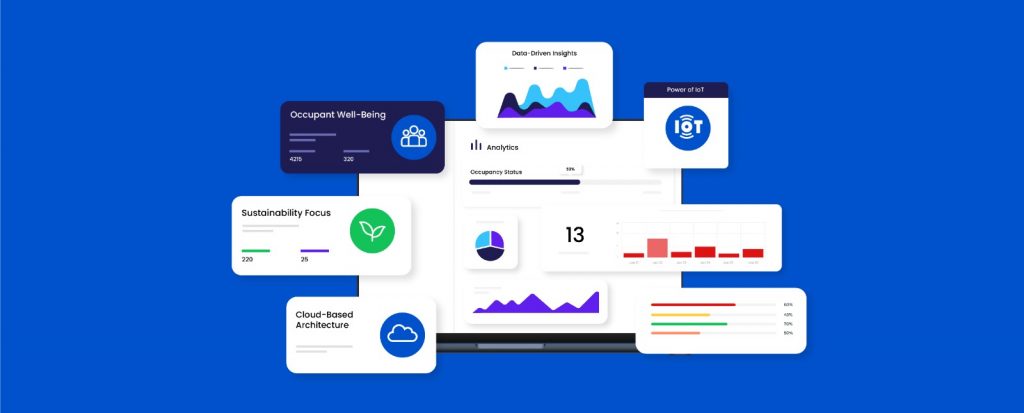The way we design, construct, and operate buildings is rapidly changing. The Internet of Things (IoT) is at the forefront of this revolution, transforming buildings into intelligent, connected ecosystems. From optimizing energy use to enhancing occupant comfort, IoT-powered solutions are the key to unlocking the full potential of our built environments.
The Need for Smarter, Greener Building Management
Traditional building management systems (BMS) often operate in silos, with limited data integration and analytics capabilities. This leads to inefficient energy consumption, suboptimal space utilization, and a less-than-ideal experience for building occupants.
The future demands a more holistic approach, where buildings become active participants in the quest for sustainability, efficiency, and occupant well-being. This is where cloud-native, IoT-driven Building Management Systems step into the limelight.

Enlite World is leading the charge in revolutionizing building management with its first-of-its-kind cloud-native BMS.
Here’s what sets them apart:
- Cloud-Based Architecture: Designed from the ground up for the cloud, Enlite’s BMS leverages the power of scalability, flexibility, and remote accessibility. This eliminates the need for complex on-site hardware setups and constant system maintenance.
- Power of IoT: By seamlessly integrating a network of IoT sensors and devices, Enlite’s BMS gathers vast amounts of real-time data on energy consumption, lighting, HVAC systems, occupancy patterns, and more.
- Data-Driven Insights: Advanced analytics and machine learning algorithms transform raw data into actionable recommendations for optimizing building performance. Facility managers gain unparalleled visibility into their operations, empowering them to make informed decisions.
- Sustainability Focus: Enlite’s BMS facilitates strategies aimed at reducing a building’s carbon footprint by pinpointing areas of energy waste and automating processes for optimal efficiency.
- Occupant Well-being: IoT sensors monitor indoor air quality, temperature, and lighting levels. The BMS can proactively adjust these parameters to create a healthier and more comfortable environment for building occupants.
The Transformative Impact of IoT on Building Management
The Internet of Things (IoT) has introduced a connected network of sensors and devices that collect real-time data about a building’s internal operations. This data revolutionizes building management in the following ways:
Energy Optimization:
- IoT sensors monitor energy consumption patterns, identifying inefficiencies and areas of potential waste.
- AI-powered systems can automatically adjust electricity, HVAC, and equipment settings based on occupancy and external conditions, resulting in significant energy savings.
Enhanced Security:
- IoT-connected cameras, access control systems, and intrusion detection sensors collaborate to create a more intelligent security network.
- Real-time alerts and remote monitoring capabilities enhance incident response and improve overall security.
Occupant Comfort and Productivity:
- IoT enables the precise control of electricity, temperature, and air quality.
- Occupants can even personalize these settings through dedicated applications, leading to a more comfortable and conducive environment that supports productivity and well-being.
Space Optimization:
- Sensors monitoring occupancy patterns provide insights into how different areas of the building are utilized.
- This data empowers facility managers to optimize resource allocation by redesigning underutilized spaces or identifying areas that require expansion.
IoT and Cloud Solutions Drive Efficiency and Sustainability in Building Management
Enlite World’s cloud native BMS exemplifies the potential of IoT in the building sector. As IoT capabilities continue to expand, we can expect even greater levels of efficiency, sustainability, and occupant-centric design to become integral parts of our built environment. The future of buildings is undoubtedly smart, connected, and responsive to evolving needs.
Enlite offers comprehensive building management solutions to organizations seeking a smart and sustainable future.














